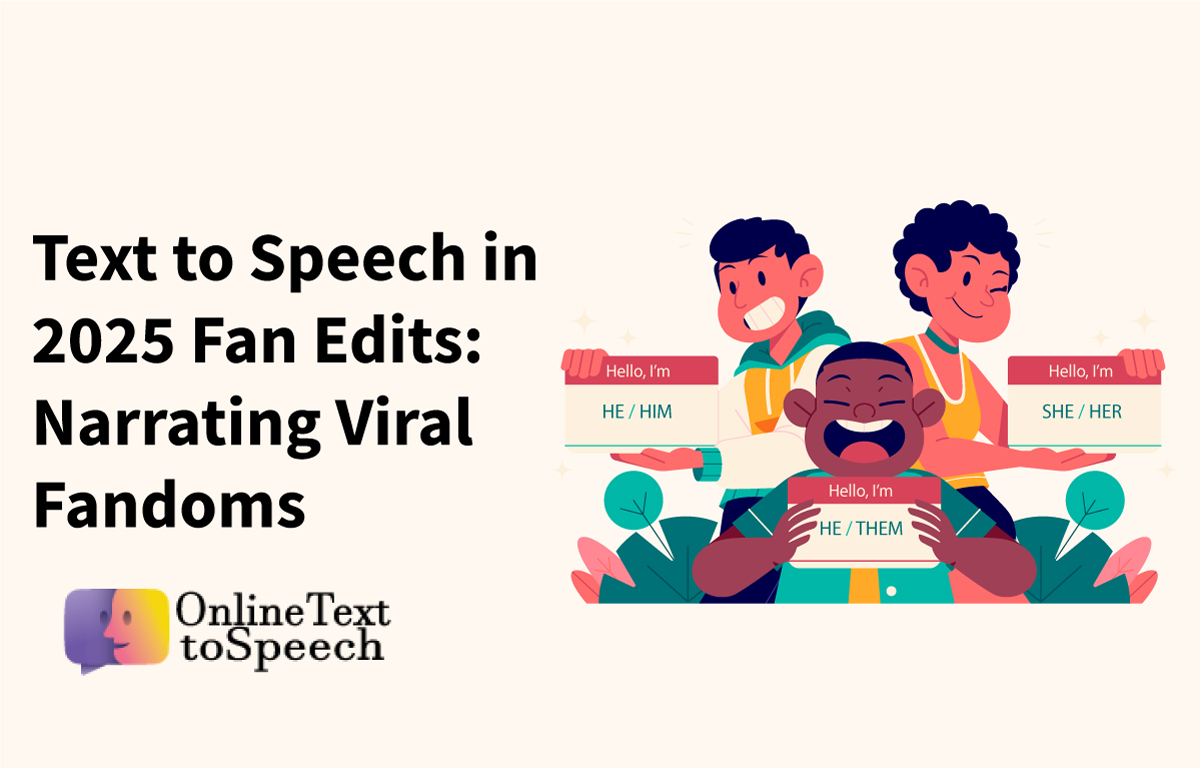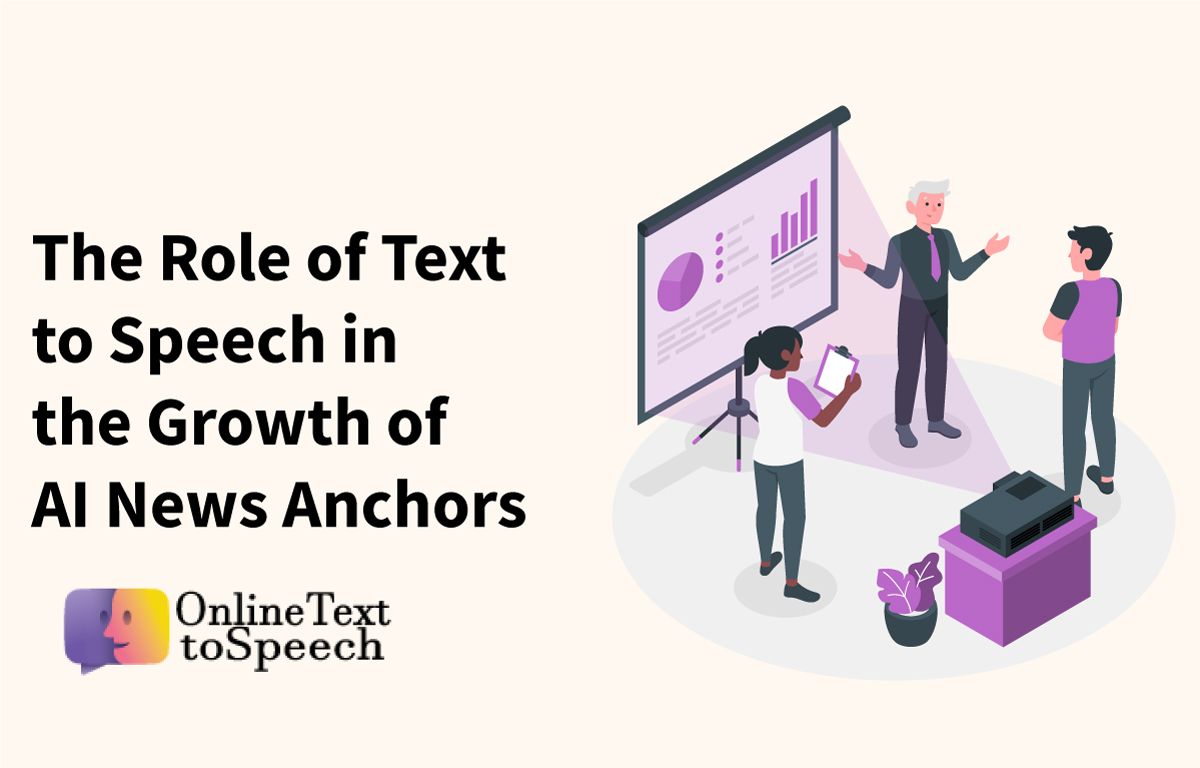In 2025, our digital world is shifting toward expressive and intelligent virtual identities. From animated influencers to gamified learning assistants, the line between reality and simulation is being creatively redefined. At the center of this transformation is text to speech, which has rapidly evolved into the defining voice behind digital avatars.
Whether on streaming platforms, social media, or virtual reality spaces, creators are using realistic voices powered by AI to bring characters and narratives to life. But this trend isn’t just about novelty. It’s a practical revolution reshaping how we communicate in an increasingly virtual world.
For developers and creators, the challenge has always been to add believable audio without recording every word manually. That’s where text to speech free tools shine — by converting written content into expressive audio, they make the voice of digital personas more dynamic and accessible.
Why Text to Speech Voices Matter for Virtual Identity
A digital avatar may look impressive, but it’s the voice that breathes life into it. An avatar without sound feels hollow, while a realistic voice creates personality, context, and emotional depth. This is why text to speech voices have become an essential layer of realism for avatar-based content.
In recent years, AI-generated voices have become more human-sounding, with variations in pitch, tone, and emotion. Unlike early robotic voices, modern AI text to speech tools can mimic nuances of regional dialects or adjust intonation to match specific moods. These features are crucial when designing characters that connect deeply with audiences, especially in the realms of gaming, education, and entertainment.
Many creators, influencers, and streamers now rely on avatars as their digital spokespeople. These avatars narrate stories, share thoughts, and even engage in live interactions — all thanks to natural-sounding synthetic speech. In this ecosystem, quality audio is non-negotiable.
The Rise of Avatars in Short-Form and Interactive Media
Platforms like TikTok, Instagram Reels, and YouTube Shorts have driven a demand for fast, repeatable content formats. Avatars equipped with text to speech online capabilities allow creators to produce bite-sized videos without worrying about voiceovers.
This automation doesn’t just save time — it opens up new creative formats. Storytelling with avatars can be done entirely through scripting, allowing teams or solo creators to develop content at scale. Many use free online text to speech tools as a fast and consistent way to keep their digital personalities active without burning out.
Voice cloning and adaptive voice features are increasingly common, enabling one avatar to express different moods in varying contexts. This personalization makes avatars feel more authentic and less like static templates.
Personalization and the Power of AI-Generated Narration
While avatars were once limited to text overlays or robotic-sounding narration, the new wave of text to speech generator platforms allows for granular control over voice attributes. Content creators can personalize speed, inflection, volume, and character, producing custom sounds that are unique to each digital identity.
This has huge implications for inclusivity. For instance, creators who may be shy, disabled, or speak a different language can still develop compelling content through voice avatars. The growing trend of using text to voice generator solutions for multilingual avatars highlights just how inclusive and expansive AI narration has become.
This wave of creative freedom has given rise to niche communities that produce avatar-based talk shows, education modules, and storytelling series — each powered by expressive, believable speech.
Text to Audio Free Tools Are Democratizing Content Creation
Until recently, creating a talking avatar required technical expertise or a big budget. Now, with text to audio free tools, anyone with a script and an idea can give life to a digital character.
These tools remove barriers for hobbyists, educators, and solo entrepreneurs who want to explore avatar-driven content without investing in recording equipment or voice actors. Even nonprofits and small businesses use TTS voices to create explainer videos, tutorials, and awareness campaigns.
The accessibility of these tools has sparked a new generation of storytellers. With a few clicks, users can publish compelling content that would’ve once required a full studio setup.
How AI Text to Speech Powers VTubing and Virtual Influencers
VTubers — virtual YouTubers — are a major phenomenon today. These online personalities use digital avatars, often animated in real time, to engage with audiences. While visuals grab attention, the consistent, emotive voice keeps people coming back.
That voice? Often powered by AI text to speech tools.
By using text-based inputs, VTubers can avoid the complexity of voice acting and still maintain a recognizable presence. With voice synthesis becoming more responsive and expressive, these avatars can react to chats, tell jokes, and even sing — all from a script.
The ability to respond to live interactions with dynamically generated speech will only become more common as AI voices are integrated directly into livestream software.
Education, Therapy, and Representation Through Avatars
Digital avatars aren’t just for entertainment. Educators and therapists are beginning to explore how avatar-based learning and emotional support tools can improve outcomes in their fields. For example, a child with anxiety might feel more comfortable interacting with a cartoon-style avatar that speaks in a calm, friendly tone.
Tools like text to speech technology let educators build gamified, engaging lessons that feature animated characters narrating content. These characters become learning companions, making the experience more enjoyable and accessible.
In therapy settings, avatars can help patients express themselves or rehearse social interactions. This is especially helpful for those with autism or speech challenges. And since TTS voices can be customized, users can choose voices that feel comforting or empowering.
Future of Voice: Custom Avatars and Next-Gen Audio Engines
The next generation of avatars won’t just talk — they’ll have voices as unique as their digital fingerprints. TTS platforms are now introducing machine learning models that can analyze a creator’s personality and tone preferences to generate matching voices.
We’re also seeing the rise of reactive avatars that generate speech in real time using emotion detection. Imagine a livestream host whose avatar laughs or sounds surprised based on the live chat’s sentiment. These features are becoming more feasible thanks to adaptive text to speech voices with AI-driven modulation.
This sophistication enables more meaningful, human-like interaction in a fully digital context. The more realistic the voice, the more deeply audiences connect with the character behind it.
Where to Start If You’re Building a Talking Avatar
If you’re planning to create your own avatar-based content and are looking for a starting point, you can try this text to speech generator which simplifies the process of turning scripts into natural-sounding voices. It’s designed for creators who want fast, accessible audio for avatars, storytelling, or even product demos.
With minimal effort, you can test different voices, fine-tune how your avatar sounds, and bring personality to your digital projects — whether for business, education, or entertainment.
Embracing the Voice-First Future
With AI narrators now indistinguishable from human speakers in many cases, voice will continue to be a driving force in digital communication. Avatars are no longer just visual placeholders — they’re becoming full-bodied characters with emotional resonance and storytelling power.
Whether it’s for marketing, social media, or education, creators are embracing text to speech free platforms as their audio partner. As voices become more lifelike and customizable, more creators will step into the avatar space without needing professional recording gear.
Free online text to speech is no longer a side tool — it’s central to the future of expressive content. And with the right blend of visuals and voice, digital avatars are already reshaping how we tell stories in the virtual age.
FAQs
It gives avatars realistic voices, allowing them to communicate and narrate without recording audio manually.
Yes, many text to speech free tools let you generate high-quality audio for avatars easily.
Absolutely. Today’s AI text to speech voices are expressive and ideal for short-form and long-form content.
The terms are often used interchangeably, but some tools labeled as text to voice generator may offer more customization.
Yes, TTS is great for making learning more interactive through talking characters or guides.




